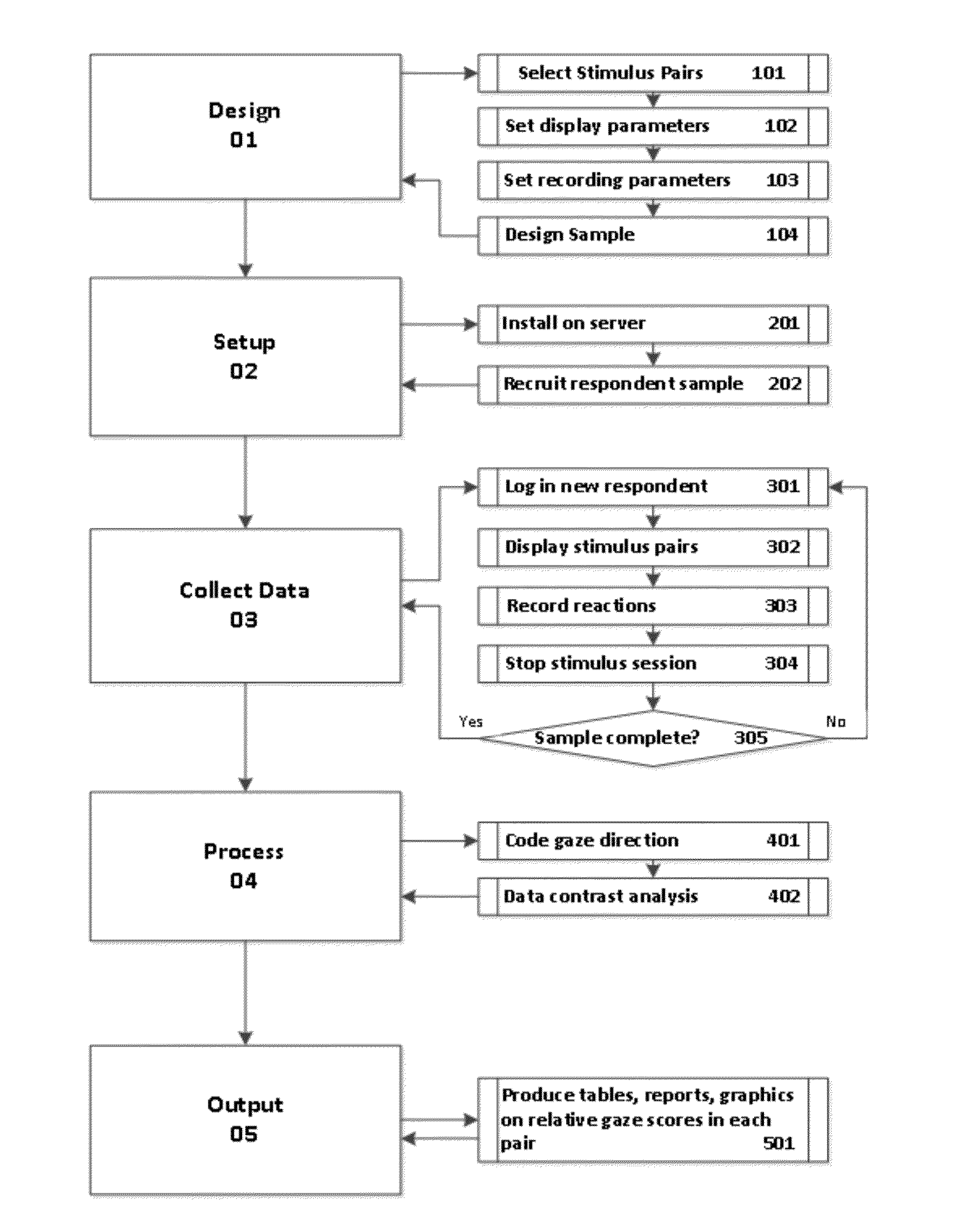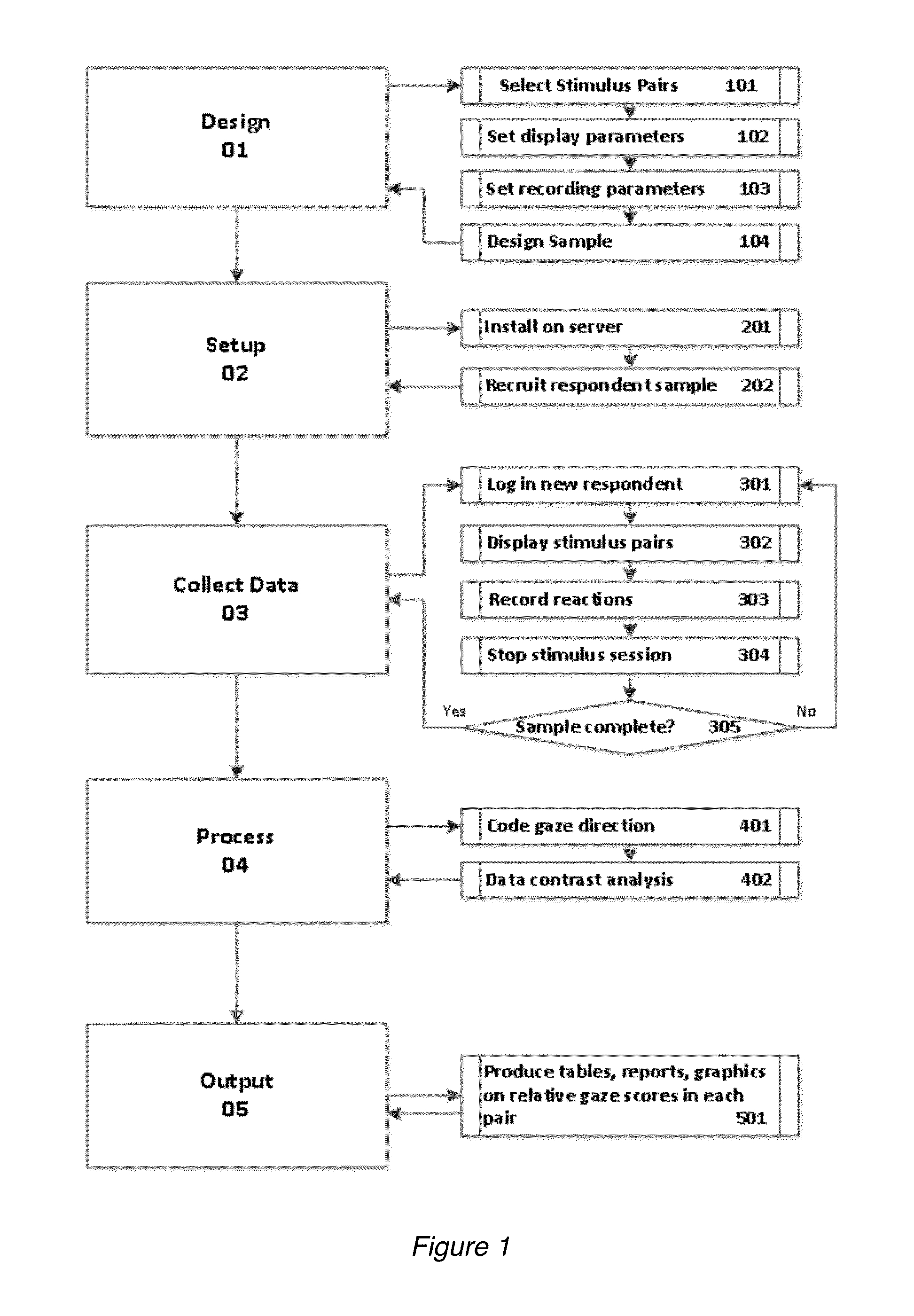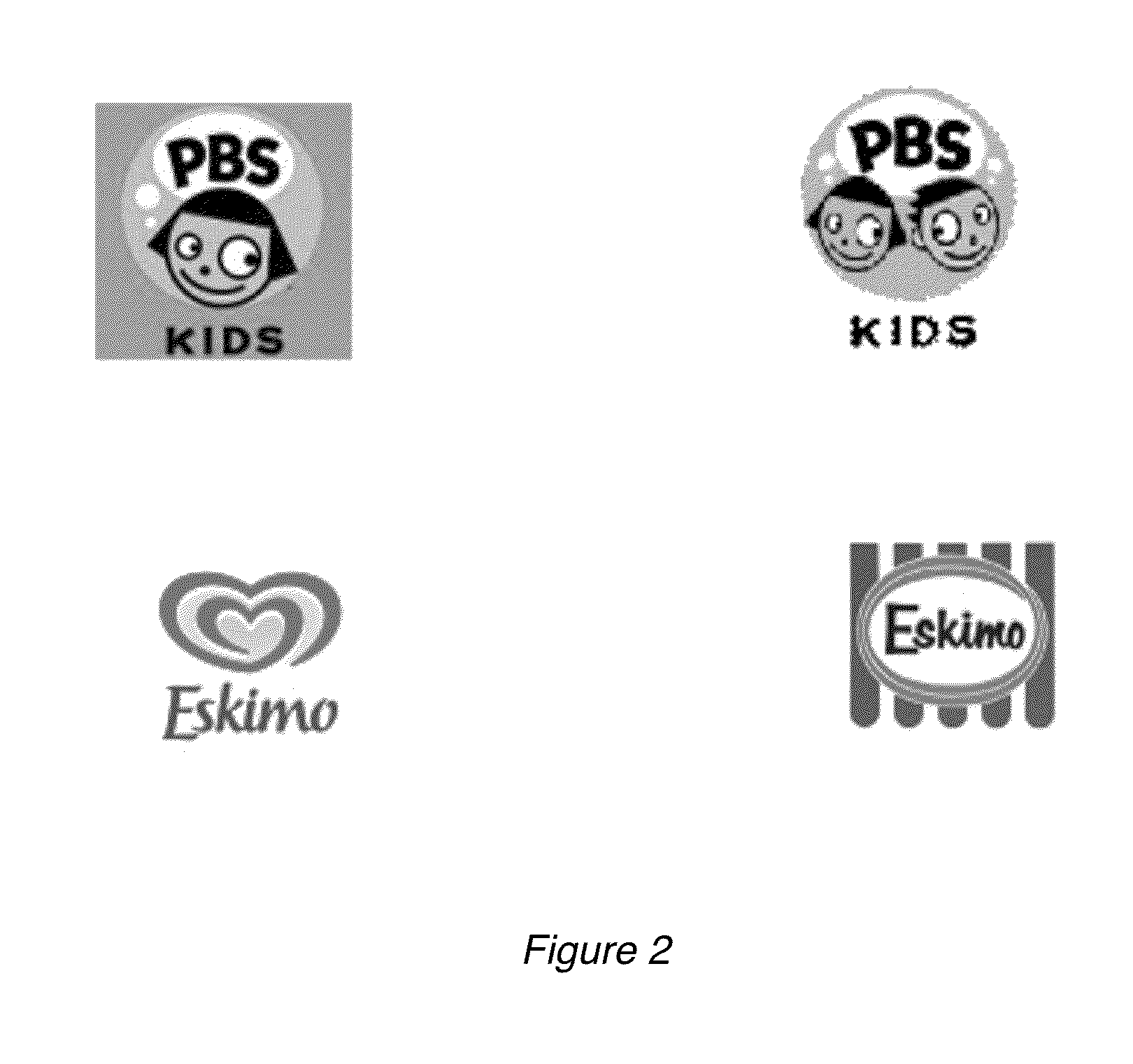Method and system for determining the relative gaze-attracting power of visual stimuli
a technology of visual stimuli and relative gaze attraction, applied in the field of eye tracking, can solve the problems of requiring considerable time, effort and expens
- Summary
- Abstract
- Description
- Claims
- Application Information
AI Technical Summary
Benefits of technology
Problems solved by technology
Method used
Image
Examples
Embodiment Construction
[0051]Broadly, the invention provides a computer-implemented method of determining the response of an individual subject to a pair of visual stimuli, which includes the steps of:
[0052]a. Causing a first image and a second image (the visual stimuli) to simultaneously appear on the screen of a display device;
[0053]b. Causing a camera attached to or built in to the display device to record the direction of gaze of the subject over a pre-determined period of time;
[0054]c. Causing said display device to transmit to a receiving computer the recorded direction of gaze, the identity of the images displayed at the time of the recording, and the location on the screen of each of the images; and
[0055]d. Calculating how often the subject was coded as gazing towards the first image and how often the subject was coded as gazing towards the second image, during the first few seconds of exposure.
[0056]In certain embodiments, the first image and the second image may be transmitted from a server to t...
PUM
 Login to View More
Login to View More Abstract
Description
Claims
Application Information
 Login to View More
Login to View More - R&D
- Intellectual Property
- Life Sciences
- Materials
- Tech Scout
- Unparalleled Data Quality
- Higher Quality Content
- 60% Fewer Hallucinations
Browse by: Latest US Patents, China's latest patents, Technical Efficacy Thesaurus, Application Domain, Technology Topic, Popular Technical Reports.
© 2025 PatSnap. All rights reserved.Legal|Privacy policy|Modern Slavery Act Transparency Statement|Sitemap|About US| Contact US: help@patsnap.com



